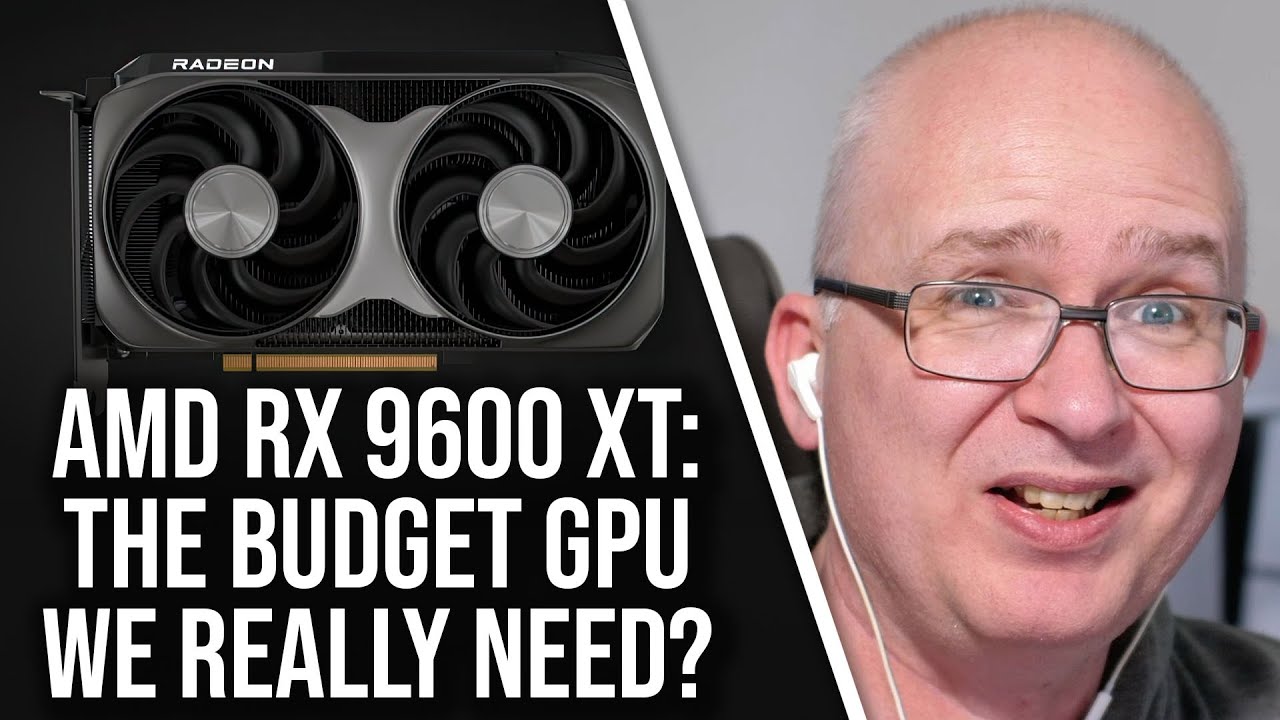During Computex, AMD announced the Radeon RX 9600 XT, a budget-friendly GPU available in 8 GB and 16 GB versions, aimed at mainstream gamers and offering better hardware features like full PCIe x16 support. While the 8 GB model suits esports and less demanding titles, concerns remain about VRAM limitations for AAA games, but overall, the card is seen as a competitive and potentially disruptive option in the mid-range GPU market.
During Computex week in Taiwan, AMD announced the Radeon RX 9600 XT, a budget-friendly GPU aimed at mainstream gamers. The card is available with two memory configurations: 8 GB and 16 GB, priced at $299 and $350 respectively. AMD’s approach simplifies their lineup by offering a single model with different VRAM options, contrasting with Nvidia’s more segmented offerings like the RTX 5060 Ti and RTX 5060. The focus on gaming rather than AI or other tech trends was a notable aspect of AMD’s keynote, signaling their emphasis on the gaming market.
The discussion highlighted the specifications and market positioning of the RX 9600 XT, comparing it to Nvidia’s recent RTX 5060 series. The 8 GB version is seen as suitable for esports and less demanding titles, but potentially limiting for AAA games due to VRAM constraints. The 16 GB version, while slightly more expensive, offers a better future-proofing option. The full PCIe x16 interface on the AMD card also provides better scaling on older systems, making it an attractive upgrade for users with existing hardware, especially when paired with technologies like FSR4.
The conversation also addressed the challenges of VRAM limitations, emphasizing that many modern AAA titles require more than 8 GB to run smoothly at high settings. AMD’s CEO Frank Azour justified the 8 GB option by stating most gamers still play at 1080p and esports titles, which don’t need extensive VRAM. However, the panelists expressed concern that VRAM below current console standards could lead to performance issues and stuttering, especially in future games with large textures and advanced features. Nvidia’s split offerings between 8 GB and 16 GB also reflect this ongoing debate about balancing cost and future-proofing.
Performance testing of Nvidia’s RTX 5060 series revealed that, under peak conditions, the card performs well and is competitive, particularly with features like RTX mega geometry and DLSS. However, issues such as PCIe x8 interfaces and VRAM limitations can impact performance, especially on older systems or in VRAM-intensive scenarios. AMD’s upcoming RX 9600 XT, with its full PCIe x16 support and larger VRAM options, aims to address some of these shortcomings, potentially making it a strong contender in the mid-range segment and challenging Nvidia’s dominance.
Overall, the panel expressed optimism about AMD’s new offerings, praising their hardware decisions and the potential for the RX 9600 XT to shake up the mid-range GPU market. While concerns about VRAM remain, the move towards more competitive hardware and the inclusion of features like FSR4 are seen as positive steps. The speakers are eager to get hands-on with the new cards and believe that AMD’s focus on gaming performance and hardware improvements will make the RX 9600 XT a compelling choice, especially for gamers looking for good performance at a reasonable price.
